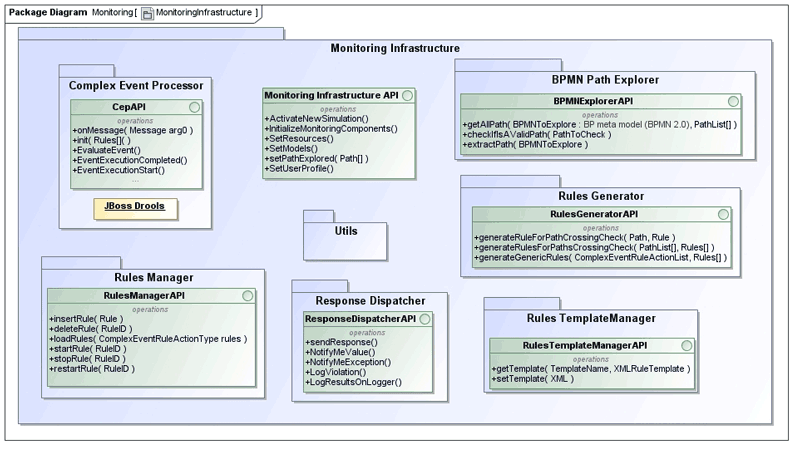by Antonello Calabrò, Francesca Lonetti, Eda Marchetti, ISTI-CNR
Nowadays, Business Process Model and Notation (BPMN) represents the de facto standard language for creating a description of processes and then developing executable frameworks for the overall planning and management of these processes. We describe a methodology for the development of execution adequacy criteria able to identify the main entities of the business process that are covered during execution, and to issue a warning if some entities are not covered.
The monitoring of business process execution is crucial not only for business process management and validation but also for performance analysis and optimization. When assessing the thoroughness of a business process execution it is important to identify entities that have not been observed for some time and to be able to check whether something is going wrong. Existing work in this field focuses on monitoring and analyzing the factors that influence the performance of business processes. Key performance indicators (KPIs), including time-based and cost-based parameters, are defined together with their target values based on the business goals.
The aim of our approach is to use monitoring facilities in order to measure the adequacy of the business process execution, identifying the entities that should be covered (activities, connection objects, swimlanes, etc.), assessing what percentage has been covered, and issuing a warning if some entities are not covered. These coverage-based business process execution adequacy measures make it possible, on the one hand, to detect unexpected behavior or security flaws in the business process execution and, on the other, to improve business process planning and performance optimization. This idea has been inspired by coverage-based test adequacy, which has been extensively studied in software testing, e.g. referring to the coverage of entities in the program control-flow or data-flow, and nowadays constitutes a fundamental instrument for test suite evaluation.

Figure 1: Monitoring Framework.
The main components of the monitoring framework that measures the business process execution adequacy are:
- BPMN Path Explorer: This component explores and saves all the possible entities (Activity Entity, Sequence Flow Entity, Path Entity) reachable on a BPMN.
- Complex Event Processor (CEP): This is the rule engine that analyzes the events generated by the business process execution and correlates them to detect patterns in order to monitor the business process execution adequacy.
- Rules Generator: This component generates the rules that monitor the business process execution. It uses the templates stored in the Rules Template Manager. These rules are generated according to the specific adequacy criterion to be assessed and the entities to be covered. For each entity, the rule generator generates one corresponding rule for the CEP. A generic rule consists of two main parts: in the first part the events to be matched (the entities to be covered) are specified; the second part includes the events/actions to be notified after the rules evaluation.
- Rules Template Manager: This component is an archive of predetermined rule templates that are instantiated by the Rules Generator. A rule template is a rule skeleton, the specification of which has to be completed by instantiating a set of template-dependent placeholders. The instantiation will refer to appropriate values inferred from the specific adequacy criterion to be assessed.
- Rules Manager: The complex event detection process depends directly on the operations performed by the Rules Manager component, which is responsible for loading and unloading sets of rules into the complex event processor, and firing it when necessary.
- Response Dispatcher: The Response Dispatcher is a registry that records the business process execution adequacy monitoring requests. When it receives notice of a rule firing or pattern completion from the CEP, it stores coverage information. It then produces statistics on the overall percentage of the covered entities and sends warning messages regarding those entities that are not covered to the consumer/requester of the business process adequacy evaluation.
A first assessment of the approach proposed was made on a case study developed within the Learn PAd European project [1]. It was demonstrated that the coverage measurements provided were useful for assessing the adequacy of a business process based learning session.
Reference:
[1] Bertolino, Antonia, Antonello Calabró, Francesca Lonetti, and Eda Marchetti. “Towards Business Process Execution Adequacy Criteria.” In Software Quality. The Future of Systems-and Software Development, pp. 37-48. Springer International Publishing, 2016.
Please contact:
Antonello Calabró
ISTI-CNR, Itay











